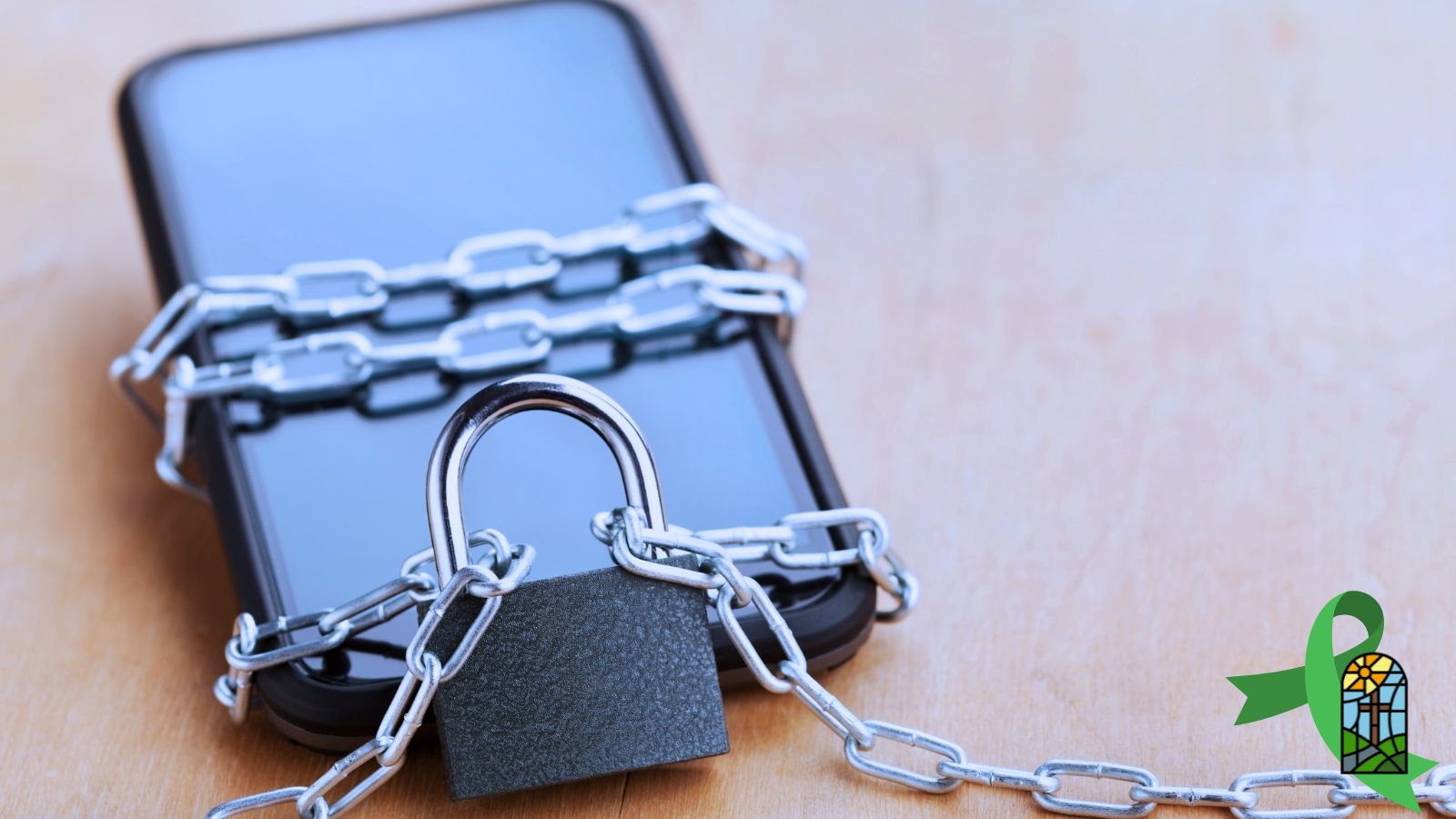We’ve got a problem. Chances are, it’s either in your hand right now or very near it. And by the time you finish reading this, it’ll likely have already tried to summon you away to look at something else. With all of the good that it can bring, our always-on tech culture breaks our attention, increases anxiety, and diminishes presence. Fortunately, there’s a lot we can learn from ancient church practices for digital detox, which is exactly what we need in order to maintain stronger mental health and clarity.
In order to get a handle on this one, we first need to explore our state of constant connectivity. There are certainly some great benefits to this technology that’s become an integral part of our lives. But we need to be aware of how it hurts us too. Understanding this, we can then look at some ancient practices and how modern science backs up their impact. Then we can find ways to implement new habits and routines into our lives that bring better balance, and greater mental well-being.
The Modern Dilemma: Constant Connectivity and Its Toll
Technology has some really incredible benefits. There are two things in particular that I’m grateful for, access to information and connectivity to people.
I grew up in a time that when you needed to learn something, you’d need to find someone who was an expert (or somewhat knowledgeable) in the subject and then spend some time with them learning whatever you’d need to know. Now, we simply pull our phone (which is Internet connected 100% of the time) out of our pocket, do a quick Google search and the answers are there. And most of the time, it’s probably there in the form of several YouTube videos. I’ve heard it said you can essentially earn a Master’s Degree (level of knowledge) in any topic you want using information that’s freely available on the Internet. And we have that in the palm of our hand with the prevalence of mobile devices.
Technology also has the ability to transcend time and space. The level of connectivity we can have with loved ones is no longer limited by geography. So when one of my kids hits some milestone, I take pictures and post them online. In that instant, aunts, uncles, grandparents, friends, and any other loved ones can see it, and react and engage with it. It doesn’t matter if they’re 2,000 miles away. And they don’t need to take the hours (or days) required to travel to experience all of that for themselves. This results in far more connected relationships than what we’ve ever been able to maintain before.
But there’s an extreme downside to this technology too.
I could spend a great deal of time talking about the dopamine release and addiction that these devices trigger in us. But I want to focus more on the anxiety and depression that’s shown to have a direct connection to screen-time. Research on smartphone use has shown that increased use correlates to mental health problems like anxiety, chronic stress, and depression. It’s not a stretch when you consider how much shock-value content the algorithms feed us, and how we’re constantly blasted with the “best life” views we see other people presenting online that we compare with our own miserable lives. The result is a constant beating that our mind and emotions take, leaving us us struggling to find value and hope. Jean M. Twenge, Psychologist, has reported:
“The more time [people] spend looking at screens, the more likely they are to report symptoms of depression.”
It’s not just mental and emotional impacts. Another study has shown that excessive smartphone use has been connected to physical health issues. Blue light exposure has resulted in disrupted sleep patterns, which can affect melatonin levels and circadian rhythms. And poor sleep can lead not only to greater physical issues, but also feeds the mental and emotional well-being, adding fuel to the fire. Psychotherapist Nancy Colier points out:
“Without open spaces and downtime, the nervous system never shuts down—it’s in constant fight-or-flight mode. We’re wired and tired all the time.”
This issue is hitting our youth particularly hard, and they know it! According to Barna Group, over half (53%) of Gen Z feel bad about the amount of time spent on screens. And 60% even recognize that their generation spends too much time on screens.
We need to remember that there’s a lot of good that comes with the technology today. But for all the good, there are also some really negative impacts. So the answer isn’t necessarily about just getting rid of it in order to take our lives (and sanity) back. It’s really about finding balance.
Ancient Practices of Stillness and Silence
In a world full of noise, silence is the anecdote. Our problem is that we tend to fill every quiet moment in our lives with a screen, only increasing the noise inside of us.
Thomas Merton (1915-68), the great contemplative monk, theologian, and writer, recognized even in his time how our ability to appreciate silence was diminishing. He said,
“The world of men has forgotten the joys of silence, the peace of solitude which is necessary… for the fullness of human living.”
We cannot talk about this idea of stillness and silence without exploring the Desert Fathers, a 3rd century group of Christian hermits living in the desert to escape society as a way to live as Christ called them to live. They set the foundation for the monastic movement devoting themselves to simplicity, prayer, and work. They believed that solitude and silence is where we meet God and find healing inside of ourselves.
Henri Nouwen, in his classic book, The Way of the Heart: The Spirituality of the Desert Fathers and Mothers, writes:
“Solitude is the furnace of transformation. Without solitude we remain victims of our society and continue to be entangled in the illusions of the false self. Jesus himself entered into this furnace. There he was tempted with the three compulsions of the world: to be relevant (‘turn stones into loaves’), to be spectacular (‘throw yourself down’), and to be powerful (‘I will give you all these kingdoms’). There he affirmed God as the only source of his identity (‘You must worship the Lord your God and serve him alone’). Solitude is the place of the great struggle and the great encounter – the struggle against the compulsions of the false self, and the encounter with the loving God who offers himself as the substance of the new self.” (Emphasis mine.)
This practice of emptying ourselves is where we find God. Silence isn’t about absence, it’s about presence. It’s the place where all of our false self dies and the true self in Christ is found.
Nouwen continues,
“The wisdom of the desert is that the confrontation with our own frightening nothingness forces us to surrender ourselves totally and unconditionally to the Lord Jesus Christ.”
Stillness is not escape, it’s a place of confrontation and formation. It isn’t emptiness, it’s presence, attentiveness, and healing. Solitude isn’t about isolation, it’s communion with God… the God who heals us.
Scientific Perspectives on Stillness and Mental Health
As we can see, long before neuroscience had a name for it, the early church understood that intentional stillness brings clarity, healing, and transformation. Today, science is catching up.
In 2014, a meta-analysis published in JAMA Internal Medicine found that mindfulness meditation (which closely models Christian contemplative practices) can lead to improvements in anxiety, depression, and pain. These results were so significant that in some cases it was found to be comparable to antidepressant medications. Participants also reported improved concentration and memory after just a few weeks of practice.
Another study from Harvard Medical School in 2011 shows some incredible results that indicate that consistent stillness literally reshapes us. MRI studies have shown that regular meditation increases gray matter density in the hippocampus (associated with memory) and decreases density in the amygdala (linked to stress and fear). This rewiring of the brain is significant, considering the physical healing that’s taking place through these meditative practices.
Not only does silence rewire the brain, it also has generative powers. A study published in Brain Structure and Function in 2015 found that two hours of silence per day can lead to the development of new cells in the hippocampus, impacting memory, emotion, and learning. In other words, silence stimulates growth… not just spiritually, but biologically.
These findings are significant. They suggest that incorporating silence and stillness into daily life can have real benefits for our mental health, including reduced stress, improved memory, and enhanced emotional regulation. This aligns completely with the ancient traditions and practices of contemplative silence as a path to finding inner peace, clarity, and strength.
Integrating Ancient Practices into Modern Life
So how do we make this work? These devices have become such a big part of who we are, that many of us consider them almost as important as any other part of our bodies.
The key, I believe is about putting them in their proper place. And that means mastering two elements in particular… notifications and presence.
Part of the problem with our devices is that they’re always summoning us. Ding… you have a new email! Ding… someone just liked your post on Facebook! Ding… there’s a score update for your favorite baseball team! Ding, ding, ding, ding… it just never stops! And every single time, it pulls our attention away from any other independent thought we might have or activity we might be involved with. Andy Crouch, in this book The Tech-Wise Family: Everyday Steps for Putting Technology in Its Proper Place, talks about these “nudges” from our devices, saying,
“We are continually being nudged by our devices toward a set of choices. The question is whether those choices are leading us to the life we actually want. I want a life of conversation and friendship, not distraction and entertainment; but every day, many times a day, I’m nudged in the wrong direction. One key part of the art of living faithfully with technology is setting up better nudges for ourselves.”
They key is to set the notifications on our devices so that we’re not being summoned every few minutes. For example, I leave notifications for text messages on because that’s real-time communication that may be needed for family, friends, or work. But I don’t need to know about every like or comment or whatever on Facebook, so I turn those off. They’ll be there when I decide to go into the app on my own timing to see what’s been happening.
It’s also important that we deal with the constant presence of these devices in our lives. It’s important to set up tech-free zones. If we can find times when device use is simply off-limits, then we can devote that time to more fruitful activities (including silence). Crouch talks about the spaces we create too, saying,
“Fill the center of your life together—the literal center, the heart of your home, the place where you spend the most time together—with the things that reward creativity, relationship, and engagement. Push technology and cheap thrills to the edges; move deeper and more lasting things to the core.”
I’ve recently been trying to make time in the car one of the standards for my family. An interesting thing happened when my kids were told that their devices were off-limits during the car ride home from church one day… they talked! And they talked about some really interesting things going on in their lives!
We need boundaries for ourselves and the technology we allow into our lives. When we can put the devices in their proper place (a less dominant one), then we can focus on the things that really matter. And doing so creates the space for the silence and stillness that we need. Maybe it’s reflecting on a Psalm. Or maybe it’s just sitting outside in the fresh air and listening for what God wants to share with you.
Final Thoughts on Ancient Church Practices for Digital Detox
While technology can be a blessing in many ways and can enhance our lives greatly. It’s something that we need to keep under control, so that it doesn’t become our master. The studies are all pretty conclusive that if we let it dominate our lives, the consequences can be quite dire.
The good news is that long before these technologies existed, ancient Christians instituted practices that have benefits that they never could have foreseen.
By instituting solitude, stillness, and silence, they found that we can experience deep inner healing and peace. They discovered that this is one of the best places to find and hear from God, and to receive what He has to offer us. And many of our churches today offer spaces for contemplative prayer, various activities on the liturgical calendar that lean in to reflective practices, and resources to guide you in your own personal journey.
The early church knew something that our distracted culture needs to recover. Stillness isn’t escape; it’s presence, the presence of the One Who Heals. Thousands of years later, these ancient paths still lead to peace.
The key is to get quiet, and let God do His work in you.





While I am already so familiar with the tones of this topic, and am one that regularly tries to lovingly guide others to make adjustments and create space for quite, I still need to hear it myself and be reminded to seek out these practices in my own life. Thanks; I needed to hear this today.
You’re not alone! I still need to hear it, even after writing this one!